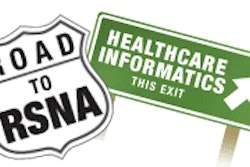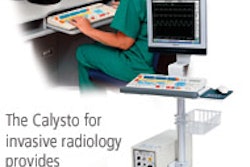DALLAS - The Department of Defense's Joint Medical Asset Repository (JMAR) has yielded much-needed improvements in managing medical supplies in the military healthcare system, according to a presentation Tuesday at the 2005 Healthcare Information and Management Systems Society (HIMSS) meeting.
In the first Gulf War campaign, the military had independently operating medical logistics systems, with no way to examine assets maintained at various locations. As a result, there was duplicate ordering of supplies and large unidentified stockpiles, said Capt. Andrew Lattimore, USAF. Lattimore, JMAR project officer at Fort Detrick, MD, spoke on behalf of Defense Medical Logistics Standard Support (DMLSS) deputy program manager Lt. Col. Ken Darling, USAF.
"It made it very difficult for us to be of help there in the theater of operations," he said. "We didn't have the supplies and equipment to be able to do that, and this was a direct result of the fact that the systems did not talk to each other. Millions of dollars of supplies and equipment were lost in the system because nobody knew where (the supplies and equipment) belonged or where they were going to."
From that experience, the military realized there was a need at all levels of command to be able to track medical logistics assets, and for consolidated data and associated information to be accessed anywhere in the world, Lattimore said. In response, JMAR was developed with the goal of making readily available joint medical logistics asset information for supporting global contingency operations and medical logistics decision support.
Utilizing a Web-based interface, JMAR serves as a central repository, providing access to medical material inventory levels as well as blood-product inventory levels and shipments worldwide, Lattimore said. Users at fixed facilities can view prime vendor purchases and a graphical presentation of prime vendor utilization percentages, as well as medical equipment to support DOD medical equipment initiatives.
JMAR also provides users with a view of medical assemblages to support contingency operations, medical facility management information to support facility management initiatives, and in-transit viability of medical logistics supplies and equipment, Lattimore said. Specialized critical reports are also available.
In the next 18 months, JMAR will experience a significant expansion in scope, transitioning from an operational data store to a full-blown data warehouse, Lattimore said. JMAR will handle long-term data storage and extraction, and provide increased access to enterprise data, he said. Role-based security will also be available.
Data mining capabilities will include executive dashboard metrics, trend analysis, predictive logistics, and geospatial information system reports.
"Data is good, but organized data is better, and data for decision-making is best," Lattimore said.
By Erik L. Ridley
AuntMinnie.com staff writer
February 16, 2005
Related Reading
PACS succeeds clinically, financially for IDNs, February 15, 2005
IHE assists regional health architecture, February 15, 2005
Lack of standards hampers payor, provider collaboration, February 14, 2005
Seven-step approach offers help for HIPAA integration, February 14, 2005
Copyright © 2005 AuntMinnie.com




















